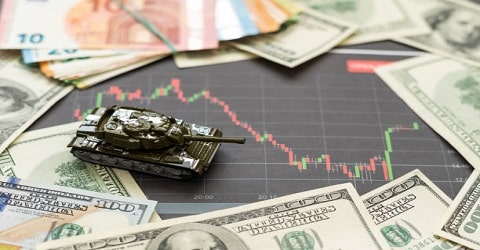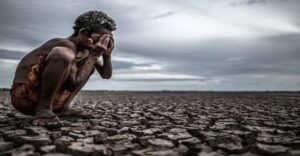
The Economics of War: A Comprehensive Analysis in 7 Key Points
The economics of war is a multifaceted realm where financial costs intertwine with strategic gains and humanitarian losses. According to the Stockholm International Peace Research Institute, global military expenditure reached a staggering $2443 billion in 2023, reflecting a 6.8% increase from the previous year.
Beyond direct spending, wars disrupt economies, with conflicts in Syria and Yemen alone causing GDP losses of $226 billion and $88.8 billion respectively. Moreover, the long-term repercussions of war, including refugee crises and infrastructure destruction, exacerbate economic burdens. Understanding these dynamics is crucial for policymakers to navigate towards sustainable peace and prosperity.
The Economics of War
The economics of war unveil a complex interplay of political, social, and economic factors. While the human cost is evident, the economic intricacies often remain veiled. Understanding these dimensions is crucial to grasp the enduring effects on societies and nations. It delves into the financial dynamics that shape conflicts, impacting resource allocation, production, and expenditure.
Paradoxes emerge as destruction sparks economic activity amidst debt and instability. War propels technological innovation yet exacts a toll on lives and livelihoods. It underscores the grim reality that conflict extracts a multifaceted toll, not just in currency, but in the very fabric of societies.
In this article, we delve into seven key points to elucidate the intricate relationship between war and economics.
Read More: Iran-Israel Conflict: A Major Threat to Middle East Economic Corridor Initiatives
Table of Contents
1. Direct Costs of War
The direct costs of war encompass expenses related to military operations, including personnel salaries, equipment procurement, and logistical support.
Up to Fiscal Year 2022, the U.S. federal government has disbursed and committed a staggering $8 trillion towards the post-9/11 conflicts in Afghanistan, Pakistan, Iraq, and beyond.
Primarily financed through borrowing, these ongoing wars have significantly inflated the U.S. budget deficit and national debt, triggering broader macroeconomic repercussions like elevated consumer interest rates. Failure to promptly repay the war-related borrowings will entail substantial future interest payments, potentially exceeding $6.5 trillion by the 2050s.
Meanwhile, Russia’s military expenditure surged by 24% in 2023, reaching an estimated $109 billion, marking a substantial 57% escalation since 2014, coinciding with the annexation of Crimea. China, the world’s second-largest military spender, allocated approximately $296 billion to its military in 2023, reflecting a 6.0% uptick from 2022. This marked the 29th consecutive annual increase in China’s military spending.
The United States alone accounted for nearly 37% of this expenditure. Such colossal sums divert resources away from productive investments, affecting economic growth and development.
Read More: The Economic Impact of the Gaza War in Israel Economy
2. Indirect Costs and Economic Disruption
War exacts not only direct expenses but also indirect costs and economic upheavals, echoing long after the guns cease. Infrastructure destruction, trade route disruptions, and mass displacements fuel economic instability.
In 2016, the world economy hemorrhaged $14.3 trillion due to violence and conflict in purchasing power parity terms, equaling 12.6% of global GDP.
This colossal loss encompasses resources diverted to combat and manage violence. While some nations grapple with civil unrest, ethnic clashes, and terrorism, others reel from organized crime and soaring homicide rates.
Syria, for instance, faces a staggering 67% GDP loss from war, with long-term repercussions extending well beyond reconstruction efforts.
Read More: Global Political Turmoil & Economic Uncertainty: 2024
3. Opportunity Costs and Resource Allocation
War consumes vast resources that could otherwise be allocated to essential sectors such as education, healthcare, and infrastructure.
The opportunity costs of war are immense, as investments in human capital and productive capacities are sidelined in favor of military endeavors. The economics of war exacerbate these costs, draining economies of vital funds and diverting them into destructive pursuits.
Research by the Institute for Economics and Peace indicates that redirecting just 10% of global military spending towards peacebuilding efforts could lift millions out of poverty and stimulate economic development.
Such a reallocation would not only mitigate the human toll of conflict but also foster sustainable prosperity for generations to come.
4. Military Keynesianism
War has historically served as a catalyst for economic growth through the phenomenon known as “military Keynesianism.” Governments ramp up military spending to stimulate demand, create jobs, and bolster industries tied to defense production.
However, this approach is fraught with risks, as it relies on unsustainable levels of debt and perpetuates a cycle of militarization. Moreover, the economic benefits of military Keynesianism are often unevenly distributed, exacerbating income inequality.
Among these complexities lies the intricate study of the economics of war, which delves into the multifaceted impacts of conflict on global and local economies, including its ramifications on resource allocation, market dynamics, and long-term development.
Read More: Red Sea Crisis: A New Threat to Global Inflation and Supply Chains
5. War Profiteering and the Military-Industrial Complex
The nexus between war and economic interests, epitomized by the military-industrial complex, where powerful corporations profit from perpetuating conflict, is deeply intertwined with the economics of war.
The global arms trade, a lucrative business, with the top 100 arms-producing companies generating over $420 billion in sales in 2018, further illustrates this connection. Critics argue that the pursuit of profit incentivizes arms manufacturers to promote militarism and influence foreign policy decisions, perpetuating a cycle of violence.
In this context, the economics of war, encompassing the financial incentives driving conflict and the perpetuation of violence, play a significant role in shaping global dynamics.
6. Long-Term Economic Consequences
The economic ramifications of war extend far beyond the battlefield, leaving a legacy of debt, instability, and reconstruction challenges. Post-conflict economies often struggle to recover amidst the wreckage of infrastructure and institutions.
Rebuilding efforts require substantial investments and external assistance, further straining national budgets and delaying economic recovery. The economics of war add another layer of complexity, as resources are diverted from productive sectors to military spending, exacerbating financial strain. Moreover, the psychological scars of war can inhibit social cohesion and impede long-term development.
Read More: The Global Space Economy: Navigating Economic Frontiers in the Cosmos
7. Peace Dividends and Sustainable Development
Achieving peace offers immense economic dividends, fostering stability, and unlocking opportunities for sustainable development. Research by the Institute for Economics and Peace indicates that Violence cost us $17.5 trillion last year — $2,200 per person worldwide.
Investing in conflict prevention, peacebuilding, and disarmament initiatives can yield significant returns by redirecting resources towards productive endeavors and fostering inclusive growth. Furthermore, understanding the economics of war underscores the urgency of investing in peace, as it reveals the staggering costs associated with conflict and the potential gains from its prevention and resolution.
Read More: The Irony of American-Chinese Economic Relations
Bottom Line
In conclusion, the economics of war is a multifaceted subject that encompasses direct and indirect costs, resource allocation, and long-term consequences. While war may provide short-term economic stimuli, its detrimental effects on human welfare and sustainable development far outweigh any perceived benefits.
Redirecting resources towards peaceful endeavors and conflict resolution is essential for fostering prosperity and building resilient societies. As we confront the challenges of the 21st century, prioritizing peace over conflict must be at the forefront of global economic and political agendas.





